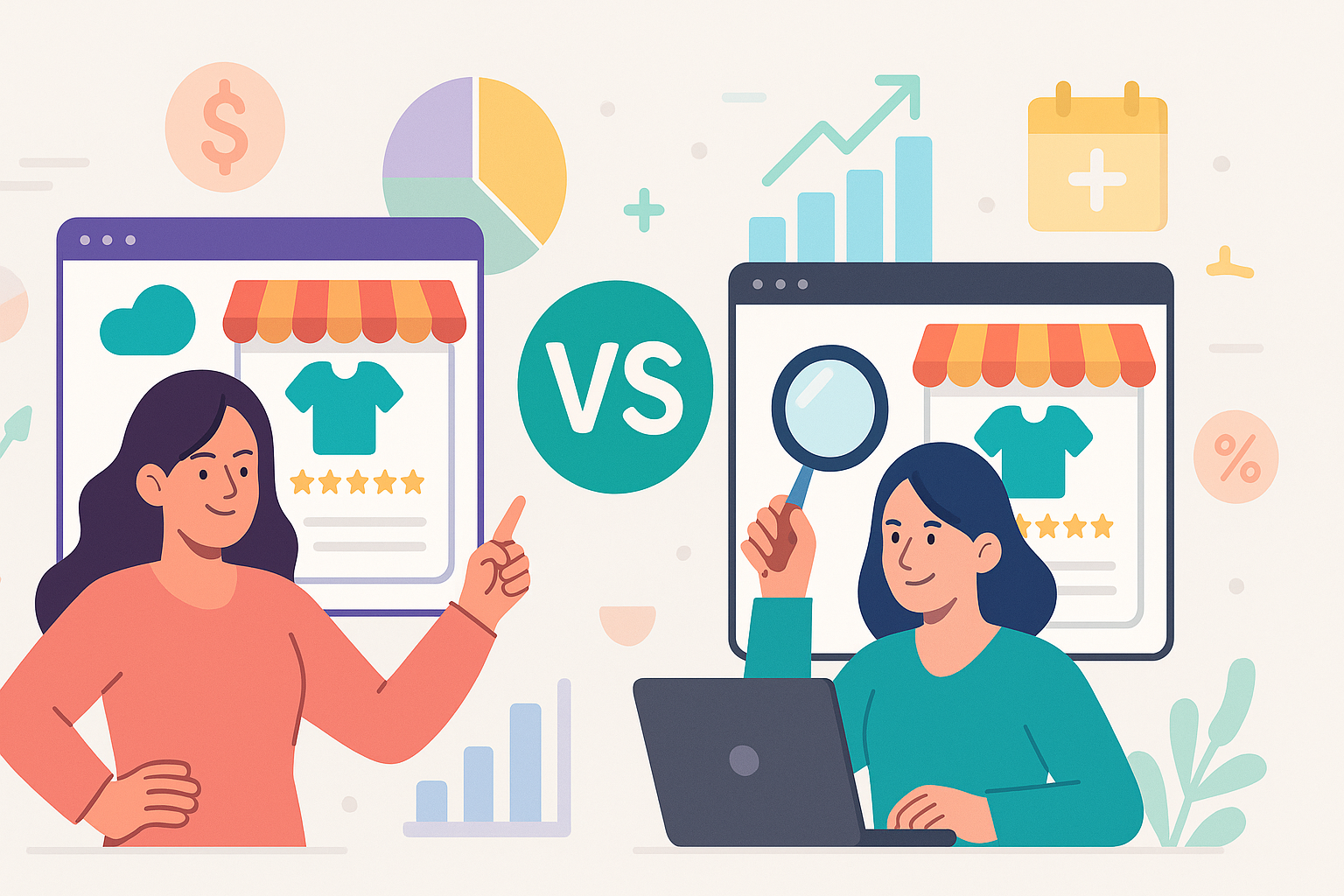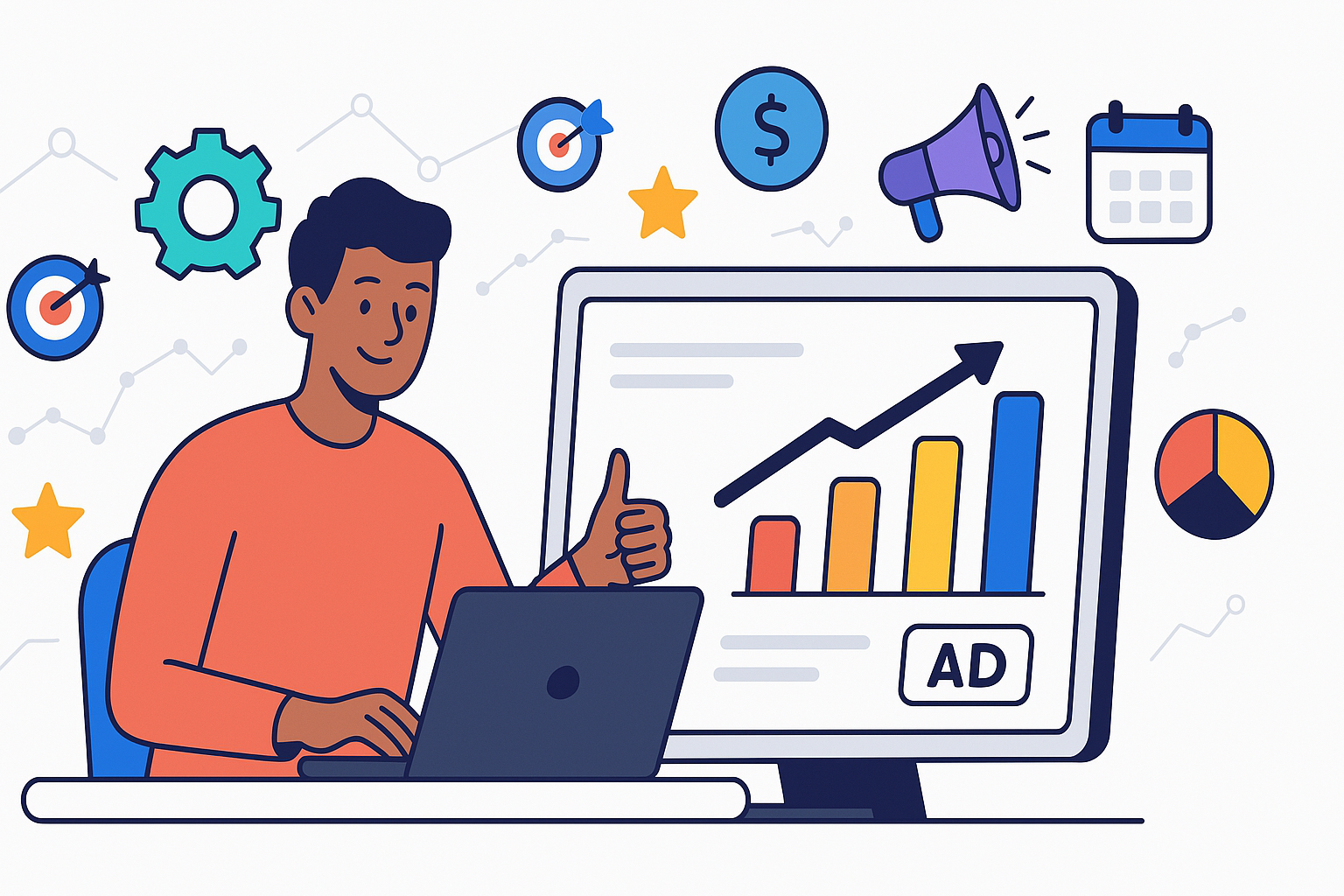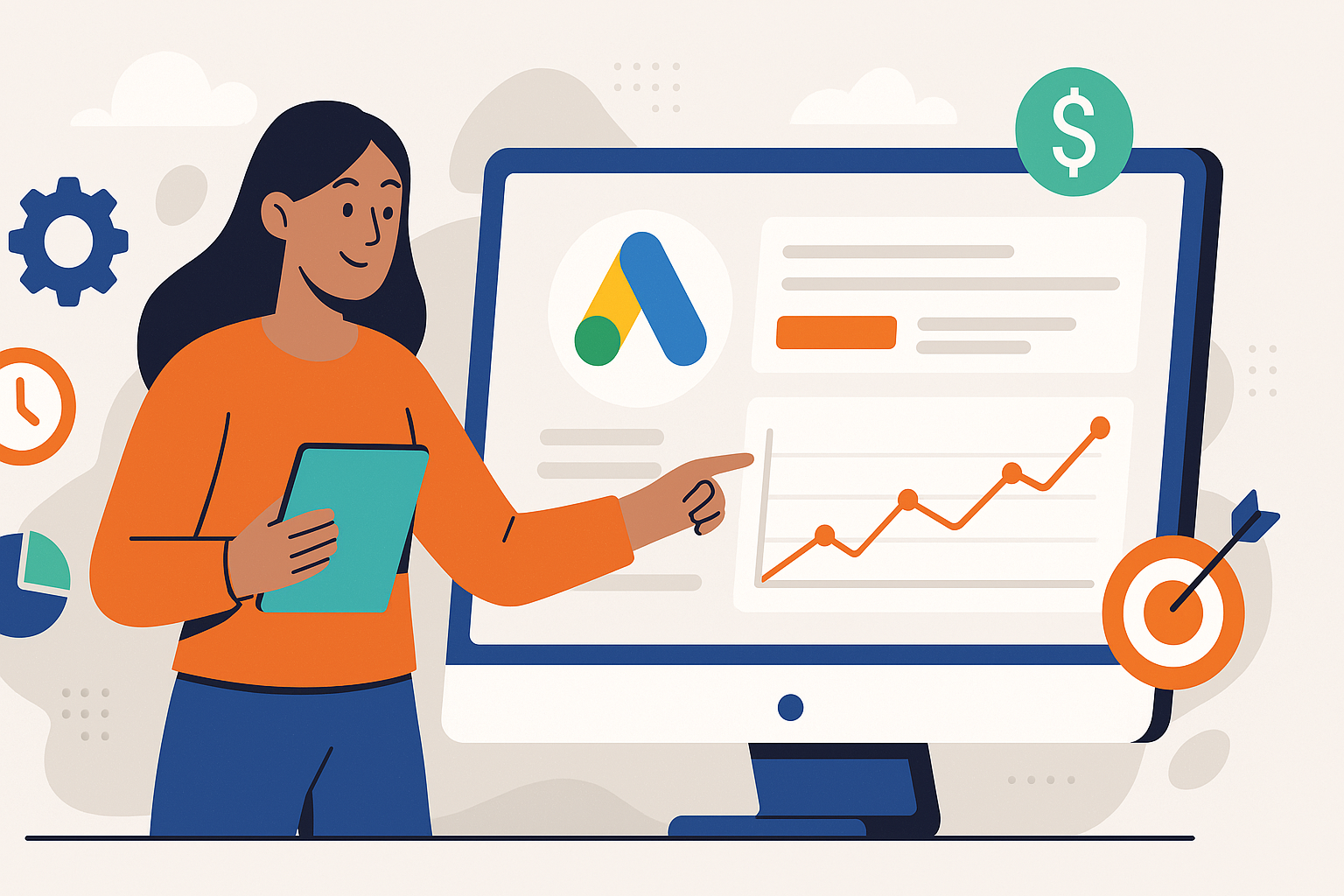What is Microsoft Ads? A Comprehensive Guide for Advertisers
by Francisco Kraefft on 24 Oct, 2023
Stepping into the world of pay-per-click (PPC) advertising often leads directly to Google Ads, the undisputed giant. However, overlooking its primary competitor means potentially missing out on a valuable, high-intent audience. Microsoft Advertising, formerly known as Bing Ads, represents a significant opportunity for businesses seeking growth, often with less competition and potentially lower costs. Understanding what Microsoft Ads is, how it operates, and who you can reach through its network is crucial for developing a comprehensive digital marketing strategy. This platform provides unique access to users across Bing, Yahoo, AOL, and other partner sites, offering distinct advantages for certain demographics and industries. Let's explore the capabilities and potential of Microsoft Advertising to determine how it can complement your existing efforts and drive measurable results for your business.
Decoding Microsoft Advertising: More Than Just Bing
Microsoft Advertising is a pay-per-click (PPC) advertising platform enabling businesses to display ads to users searching on the Microsoft Search Network and visiting partner websites. While it was known as Bing Ads until 2019, the rebranding reflects its expanded reach beyond just the Bing search engine. At its core, it functions similarly to Google Ads: you bid on keywords relevant to your products or services, and when users search for those terms, your ads may appear.
The platform operates on an auction system. Advertisers select keywords and set bids (the maximum amount they're willing to pay per click). Microsoft's algorithm then considers the bid amount and the ad's quality score (based on relevance, landing page experience, and expected click-through rate) to determine ad rank and placement. You only pay when someone clicks on your ad, making it a performance-based advertising model.
Its purpose extends beyond simple search ads. Microsoft Advertising encompasses various ad formats and targeting options designed to connect businesses with potential customers across multiple touchpoints within the Microsoft ecosystem and partner networks. This includes search results pages, specific websites through the Microsoft Audience Network, and even integration with LinkedIn data for professional targeting. Think of it not just as a Bing advertising tool, but as a gateway to a diverse online audience actively seeking information, products, and services.
Key takeaways:
- PPC Platform: Operates on a pay-per-click model.
- Auction-Based: Ad placement depends on bids and quality score.
- Beyond Bing: Includes Yahoo, AOL, DuckDuckGo, and partner sites.
- Performance Focus: You pay for clicks, aiming for conversions.
Exploring the Reach: The Microsoft Search & Audience Networks
A common misconception is that Microsoft Advertising only serves ads on Bing.com. While Bing is the cornerstone, the platform's reach extends significantly further, comprising the Microsoft Search Network and the Microsoft Audience Network (MSAN).
The Microsoft Search Network includes:
- Bing: Microsoft's own search engine.
- Yahoo: A major portal and search engine (search powered by Bing).
- AOL: Another established portal with search functionality (powered by Bing).
- DuckDuckGo: A privacy-focused search engine that syndicates Bing results.
- Syndicated Partner Sites: Numerous other websites that use Bing search results to power their own site search features.
This combined network captures a substantial volume of search queries, representing a significant share of the desktop search market, particularly in specific countries like the US. The demographic often skews slightly older and more affluent compared to the average Google user, making it particularly valuable for B2B marketers and businesses targeting established professionals or higher-income households.
The Microsoft Audience Network (MSAN) operates differently. It allows you to reach users beyond search results pages through native advertising placements on Microsoft-owned properties (like MSN, Outlook.com, Microsoft Edge) and select high-quality partner websites. These audience ads use intent signals (search history, browsing behavior, demographic data, LinkedIn profile information) to target relevant users contextually, similar to display advertising but often integrated more seamlessly with the surrounding content. This network allows for visual storytelling and reaching users earlier in the consideration phase, complementing your search campaigns.
Understanding this dual-network structure is key. You can leverage precise search intent on the Search Network while broadening your reach and engagement through visually appealing ads on the Audience Network, all managed within a single platform.
Unlocking Potential: Key Features and Ad Formats in Microsoft Ads
Microsoft Advertising offers a robust suite of features and ad formats designed to meet diverse marketing objectives. Familiarity with these tools allows you to tailor campaigns effectively and maximize your return on investment.
Core Ad Formats:
- Expanded Text Ads (ETAs): The standard search ad format, featuring multiple headlines and descriptions for prominent visibility on search results pages.
- Responsive Search Ads (RSAs): Provide multiple headlines and descriptions, allowing Microsoft's AI to automatically test combinations and serve the most effective variations for different queries.
- Dynamic Search Ads (DSAs): Automatically generate ads based on the content of your website. Ideal for businesses with large inventories or frequently changing content, as they help capture relevant searches you might miss with keyword-based campaigns.
- Microsoft Shopping Campaigns: Showcase products directly in search results with images, prices, and descriptions. Essential for e-commerce businesses, integrating with the Microsoft Merchant Center.
- Audience Ads: Native ad formats (image or feed-based) served across the Microsoft Audience Network (MSAN) to reach users based on intent and profile data.
- Vertical Ads: Tailored ad experiences for specific industries like Automotive, Travel, and Financial Services, often featuring richer formats and industry-specific information.
- App Install Ads: Drive downloads and engagement for your mobile applications.
Powerful Targeting & Features:
- Keyword Targeting: Bid on specific search terms relevant to your offerings (with broad, phrase, and exact match types).
- Audience Targeting: Reach specific groups based on demographics (age, gender), location, device, in-market audiences (users actively researching specific products/services), custom audiences (based on your own data), and remarketing lists.
- LinkedIn Profile Targeting: A unique advantage! Target users based on their LinkedIn profile information, including company, industry, and job function – incredibly valuable for B2B campaigns.
- Ad Extensions: Enhance your ads with additional information like sitelinks, callouts, structured snippets, location details, phone numbers, and more, increasing visibility and click-through rates.
- Conversion Tracking (UET): Implement Universal Event Tracking (UET) tags to measure conversions (purchases, sign-ups, etc.) and optimize campaigns based on performance data.
- Automated Bidding Strategies: Leverage Microsoft's AI to optimize bids based on goals like maximizing clicks, conversions, or target impression share.
Mastering these features allows for precise control and optimization, ensuring your message reaches the right audience at the right time.
Microsoft Ads vs. Google Ads: Understanding the Differences
While Microsoft Ads and Google Ads share the fundamental principles of PPC advertising, several key differences influence strategy and potential outcomes. Understanding these distinctions helps you allocate budget effectively and leverage each platform's strengths.
-
Reach and Volume: Google boasts a significantly larger search market share globally. However, Microsoft Advertising still commands a substantial audience, particularly on desktop and within specific demographics. It's not about either/or, but often about both/and for comprehensive coverage.
-
Competition and Cost: Generally, Microsoft Ads experiences lower competition compared to Google Ads for many keywords. This often translates into lower average Cost-Per-Click (CPC), potentially offering a better return on ad spend (ROAS), especially in competitive industries.
-
Audience Demographics: As mentioned, the Microsoft Search Network audience often skews slightly older, has higher average incomes, and includes a strong B2B presence. Google's audience is broader and more diverse. Consider your ideal customer profile when deciding platform focus.
-
Network Composition: Google's network is vast (Search, Display, YouTube, Gmail, Discover). Microsoft's network (Bing, Yahoo, AOL, DuckDuckGo, MSAN, LinkedIn targeting) offers unique access points, especially the powerful LinkedIn integration for B2B.
-
Features and Innovation: Google often pioneers new features, which Microsoft tends to adopt later. However, Microsoft has unique offerings like LinkedIn Profile Targeting and specific Vertical Ad formats. The platforms are constantly evolving, requiring ongoing attention.
-
Management Interface: Both platforms offer robust interfaces, but their layouts and workflows differ. Microsoft Advertising's interface is often considered slightly more straightforward by some users, and it offers easy import functionality from Google Ads campaigns, simplifying initial setup.
When Might Microsoft Ads Be Particularly Advantageous?
- Budget Constraints: Lower CPCs can make budgets stretch further.
- B2B Targeting: LinkedIn Profile Targeting is a significant differentiator.
- Targeting Older/Affluent Demographics: Stronger presence within these groups.
- Maximizing Reach: Complementing Google Ads to capture the entire available search market.
- Seeking Lower Competition: Finding opportunities in crowded markets.
Ultimately, a data-driven approach is best. We often recommend testing both platforms, measuring performance meticulously, and allocating budget based on results to achieve optimal reach and efficiency.
Launching & Optimizing Your Microsoft Ads Campaigns
Getting started with Microsoft Advertising is straightforward, especially if you have experience with other PPC platforms. Success, however, lies in meticulous setup, ongoing management, and data-driven optimization.
Steps to Get Started:
- Create an Account: Sign up at the Microsoft Advertising website. You'll need business details and payment information.
- Import from Google Ads (Optional): If you already run Google Ads campaigns, Microsoft offers a tool to import them directly, saving significant setup time. Review imported campaigns carefully, as not all settings translate perfectly.
- Define Campaign Goals: What do you want to achieve? (e.g., website traffic, leads, sales). This determines your bidding strategy and key performance indicators (KPIs).
- Keyword Research: Identify relevant keywords your target audience uses. Utilize Microsoft's Keyword Planner and consider match types (broad, phrase, exact, negative) to control traffic quality.
- Structure Campaigns & Ad Groups: Organize campaigns logically (e.g., by product category, service line, location). Create tightly themed ad groups with specific keywords and corresponding ad copy for maximum relevance.
- Write Compelling Ad Copy: Craft clear, concise ads with strong calls-to-action (CTAs). Use Responsive Search Ads (RSAs) and leverage various Ad Extensions (sitelinks, callouts, etc.) to maximize visibility and information.
- Set Bids and Budgets: Determine your daily budget and initial bid strategy. You can start with manual bidding or use automated strategies like Maximize Clicks or Maximize Conversions (requires conversion tracking).
- Implement Conversion Tracking: Set up the Universal Event Tracking (UET) tag on your website. This is critical for measuring performance, understanding which keywords and ads drive results, and enabling conversion-based bidding strategies.
Ongoing Optimization:
- Monitor Performance: Regularly review KPIs like Click-Through Rate (CTR), Conversion Rate, Cost Per Acquisition (CPA), and ROAS.
- Refine Keywords: Pause underperforming keywords, add negative keywords to exclude irrelevant searches, and discover new opportunities.
- A/B Test Ad Copy: Continuously test different headlines, descriptions, and CTAs to improve CTR and conversion rates.
- Adjust Bids: Increase bids on high-performing keywords/audiences and decrease them on less effective ones.
- Optimize Landing Pages: Ensure your landing pages are relevant to the ad copy and provide a seamless user experience.
- Analyze Audience Data: Refine targeting based on demographic, location, device, and audience segment performance.
Success with Microsoft Ads, like any performance marketing channel, relies on continuous monitoring, testing, and data analysis. Treat it as an iterative process, constantly seeking improvements to maximize your investment.
Conclusion
Microsoft Advertising stands as a potent and often underestimated platform in the digital marketing landscape. It offers unique access to a valuable audience segment across the Microsoft Search and Audience Networks, frequently at a lower cost than its main competitor. With robust features like diverse ad formats, detailed targeting options (including exclusive LinkedIn integration), and sophisticated tracking capabilities, it provides the tools necessary to drive significant results. Whether you're looking to expand your reach beyond Google, target specific B2B or demographic segments, or find more cost-effective PPC opportunities, Microsoft Ads warrants serious consideration in your marketing mix.
Ready to unlock the potential of Microsoft Advertising for your business? Let iVirtual's data-driven experts help you navigate the platform, optimize campaigns, and achieve measurable growth. Contact us today for a consultation!


